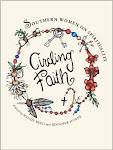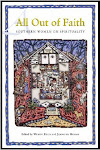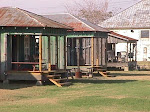Mom’s birthday was February 20, so I sent her a birthday card and wrote inside
 that I would come visit on February 25. When I arrived at the nursing home on the 25th, I found the card underneath two unopened cards on her bedside table. Having asked the staff many times to please open her cards for her because she has forgotten how, it always saddens me to find these pockets of sunshine hidden inside the darkness of unopened envelopes in her room. I showed her the card I had sent, and opened and helped her read the two others. She looked at all the cards intensely and then said,
that I would come visit on February 25. When I arrived at the nursing home on the 25th, I found the card underneath two unopened cards on her bedside table. Having asked the staff many times to please open her cards for her because she has forgotten how, it always saddens me to find these pockets of sunshine hidden inside the darkness of unopened envelopes in her room. I showed her the card I had sent, and opened and helped her read the two others. She looked at all the cards intensely and then said, “What am I supposed to do with these?”
“Those are birthday cards, Mom. You’re just supposed to enjoy them.”
“Whose birthday is it?”
“It’s your birthday, Mom.”
She looked around at the walls in her room—her eyes searching for a calendar or some other point of reference—and then asked, “What day is this?”
I explained again about the dates—her actual birthday, and then today’s date. And then I helped her open her gifts—two new blouses and camisoles, 6 pairs of sox, and a new pair of shoes. Her face lit up as I put the new sox and shoes on her feet and hung her new blouses on the knob of her armoire so I could remind her about them several times during the visit.
 Cookies and M & M’s were next. So we settled into a quiet conversation as we snacked and enjoyed the view out her windows. The nursing home is right next door to a park which is shaded by huge pine trees. Being near them always transports me back to my youth and the pine-filled neighborhood where we built our house in 1956. And so I pulled one more thing out of her gift sack—a coloring book and a brand new box of crayons.
Cookies and M & M’s were next. So we settled into a quiet conversation as we snacked and enjoyed the view out her windows. The nursing home is right next door to a park which is shaded by huge pine trees. Being near them always transports me back to my youth and the pine-filled neighborhood where we built our house in 1956. And so I pulled one more thing out of her gift sack—a coloring book and a brand new box of crayons.Last weekend when I was at Petit Jean State Park with my friend, Daphne, I
 found the book and crayons in the gift shop. The flowers on the cover were beautiful and the coloring pages had instructions about what colors to use on each flower. When I bought it, I thought I’d give it to my Goddaughter Sophie, who turned seven this week. But then I remembered how much my mother loves flowers. And that she was very artistic.
found the book and crayons in the gift shop. The flowers on the cover were beautiful and the coloring pages had instructions about what colors to use on each flower. When I bought it, I thought I’d give it to my Goddaughter Sophie, who turned seven this week. But then I remembered how much my mother loves flowers. And that she was very artistic.But also how much I loved brand new colors and a coloring book. So I pulled it out and asked Mom if she would like to color some flowers with me. At first she said she’d rather just watch, and as I colored the violets purple—her favorite color—and the picture began to come alive, she gushed motherly praise just as any proud young mother would as her little girl colored pictures. I was careful to stay inside the lines because I knew that would please her.
“You are so talented!”
 “Thank you, Mommie. You taught me how to color, you know. Don’t you want to color with me?”
“Thank you, Mommie. You taught me how to color, you know. Don’t you want to color with me?”“Okay.”
And so she chose an orange crayon and we began to work on the flowers on the next page. There we were—an 82-year-old great-grandmother and her (almost) 59-year-old daughter sharing a delightful time-warp experience, compliments of Alzheimer’s.
“You’ve always been good at art,” she
 said after we finished the second page of flowers. It was as if I was creating a panel for the Sistine Chapel instead of coloring pictures in a children’s coloring book with a box of Crayola Crayons.
said after we finished the second page of flowers. It was as if I was creating a panel for the Sistine Chapel instead of coloring pictures in a children’s coloring book with a box of Crayola Crayons. “You were good at art, too, Mom. And also good at flower arranging. You taught
 me how to do both.”
me how to do both.”She set down her crayon and smiled, and then looked wistfully out the window.
“Don’t you want to color any more, Mom?”

“No. I’ll just watch you. Can I have another cookie?”
“Sure. They’re your birthday cookies—you can have all you want.”
“Whose birthday is it?”
 And so I explained again and again, and we celebrated the event over and over. My little-girl self taped the pages from the coloring book onto the door of her armoire and basked in the glory of my refrigerator art and the joy of seeing that my mother was proud of me. It had not always been so.
And so I explained again and again, and we celebrated the event over and over. My little-girl self taped the pages from the coloring book onto the door of her armoire and basked in the glory of my refrigerator art and the joy of seeing that my mother was proud of me. It had not always been so.Just as I was about to leave, my friend Sissy Yerger showed up to visit Mom. One of the birthday cards I had opened earlier was from Sissy, so I read the card to Mom again and told her that Sissy has sent it to her. I was trying to help her make a connection, hoping that she would remember Sissy.
She smiled at both of us and then said, “Oh, I
 know Sissy. She’s a friend of my daughter’s.”
know Sissy. She’s a friend of my daughter’s.”Her words didn’t alarm me. They were just a reflection of her choice, that day, to see me as her child, and to speak of her grown-up daughter as if she wasn’t there. I’m good with that. My inner child needs all the love she can get from her mother, and she’s happy to be the recipient of that love, even when she’s 58 years old.
 I’ll be taking the coloring book back with me on my next visit, hoping that Mom will be happy to see her little girl again.
I’ll be taking the coloring book back with me on my next visit, hoping that Mom will be happy to see her little girl again. It will be near my birthday, and of course she hasn’t remembered my birthday
 for several years now. Maybe I’ll buy myself another brand new box of Crayolas… maybe even a box of 64 with a built-in sharpener. Why not? I'll be the Birthday Girl, right?
for several years now. Maybe I’ll buy myself another brand new box of Crayolas… maybe even a box of 64 with a built-in sharpener. Why not? I'll be the Birthday Girl, right?Read about Effie at 81 here.
And Effie’s 80th birthday here.





















































































